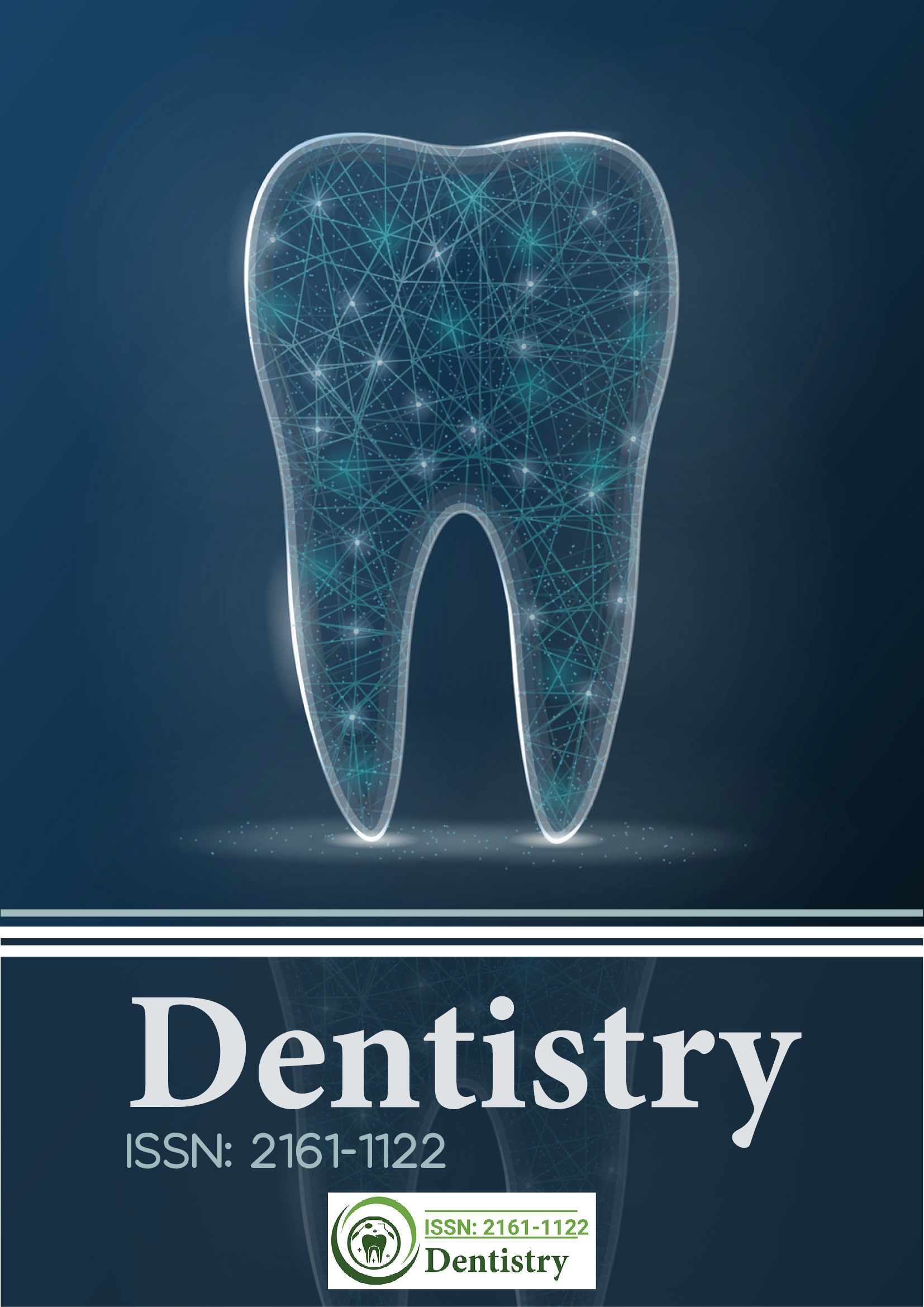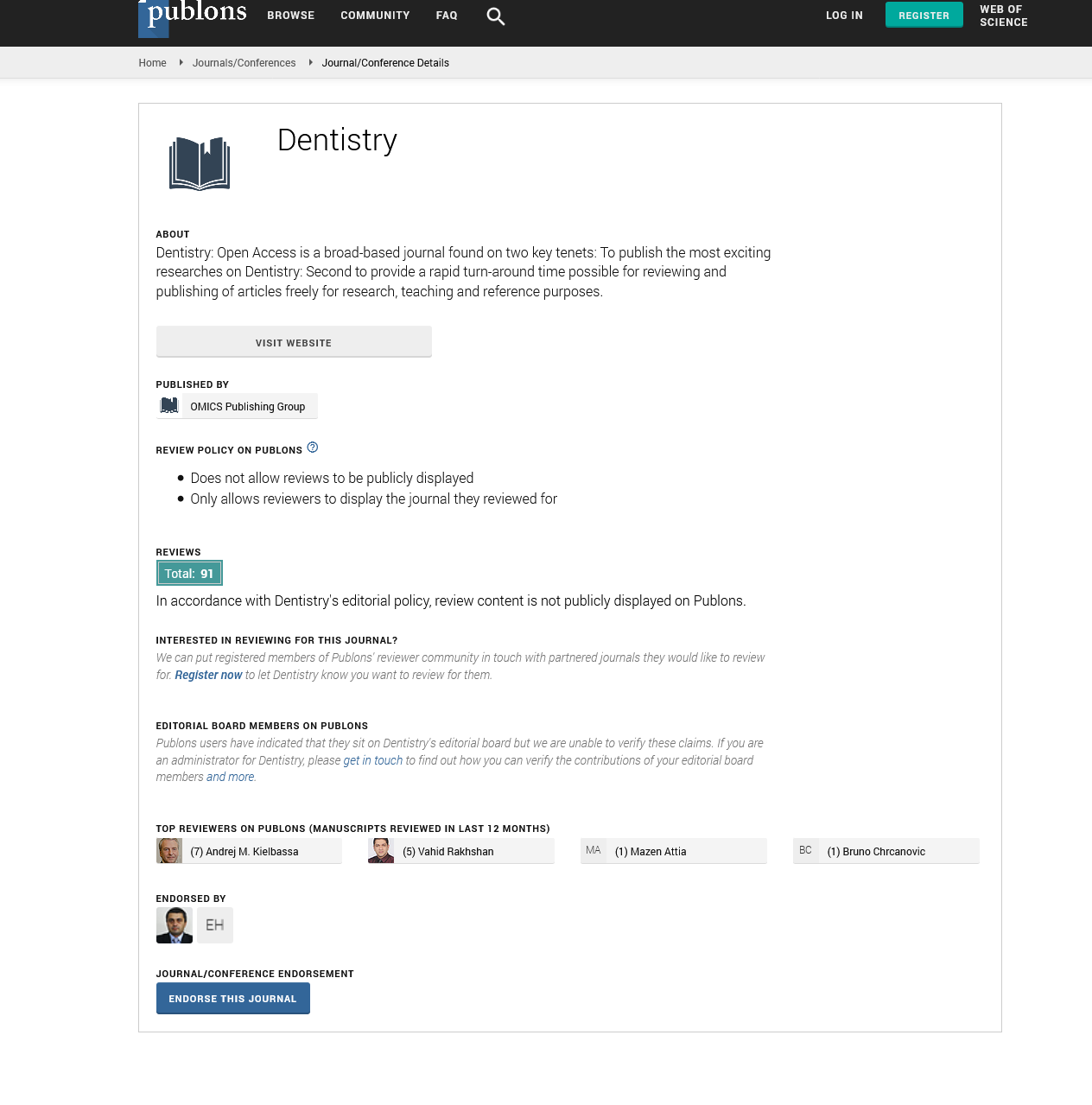Citations : 2345
Dentistry received 2345 citations as per Google Scholar report
Indexed In
- Genamics JournalSeek
- JournalTOCs
- CiteFactor
- Ulrich's Periodicals Directory
- RefSeek
- Hamdard University
- EBSCO A-Z
- Directory of Abstract Indexing for Journals
- OCLC- WorldCat
- Publons
- Geneva Foundation for Medical Education and Research
- Euro Pub
- Google Scholar
Useful Links
Share This Page
Journal Flyer

Open Access Journals
- Agri and Aquaculture
- Biochemistry
- Bioinformatics & Systems Biology
- Business & Management
- Chemistry
- Clinical Sciences
- Engineering
- Food & Nutrition
- General Science
- Genetics & Molecular Biology
- Immunology & Microbiology
- Medical Sciences
- Neuroscience & Psychology
- Nursing & Health Care
- Pharmaceutical Sciences
Basic aspects of bone reaction to implants
Joint Event on 36th International Conference on Dentistry & Dental Marketing & 18th Annual Meeting on Oral Care & Oral Cancer
October 24- 25, 2018 | Boston, USA
Jona J Sela
The Hebrew University, Israel
Keynote: Dentistry
Abstract:
A large variety of metal and ceramic devices are being introduced, on a daily basis, into bones. The appliances are implanted in order to enhance healing, function and mobility. Bone repair adjacent to implants is a multi-factorial process wherein, the foreign material is required, ideally, to produce a state of non-interference with normal osseous regeneration. The added value of implant introduction comprises restoration of biomechanical properties. Ultimately, this process should involve an improved formation of the mineralized matrix at the injured sites and an enhanced positive shift of bone remodeling balance. Specifically, implant effect on bone healing involves a range of environmental, endocrine, mechanical and chemical variables leading to changes in tissue, cell and gene expression. This is presented by the enhancement of guided action of osteoblasts and chondroblast to produce osseous tissues that restore the skeletal load bearing capacity. Concomitantly, osteoclasts are involved in the shaping of tissue healing. Recently, regulatory aspects of bone remodeling have been revealed. The findings disclosed new modalities for induction, enhancement and guided repair in conditions such as intraosseous implants, nonunion fractures and critical size defects. Various approaches to the treatment of these conditions are currently under basic, translational and clinical research. These range from advanced methods for tissue engineering, gene and cell therapies involving identification of active molecular target approach to the development of sophisticated biomaterials for implant surgery. In view of the multidisciplinary nature of these efforts, the present talk addresses modern aspects of bone healing, with a special attempt to enhance convergence of different experimental and clinical approaches designed for the study of implants and bone healing in its diverse forms and under various conditions. The information and ideas provided should be of value for the understanding of implant rejection in particular and at a broader view, to the experimental skeletal biologists and clinicians in the perception of healing and regenerative processes.
Biography :
Jona J Sela has been appointed full professor of Oral Pathology by The Hebrew University, Jerusalem, Israel at the age of 40 years. He served as Head, Division of Oral Pathology and Chaired the Institute of Dental Reseach. Currently, director of the Laboratory of Biomineralization. He authored more than 250 publications including books and has been serving as on editorial boards. His research interests comprise gene-expression of bone cells around dental and orthopedic implants. His book "Principles of Bone Regeneration" was published by Springer Verlag US.
E-mail: jjsela@cc.huji.ac.il

